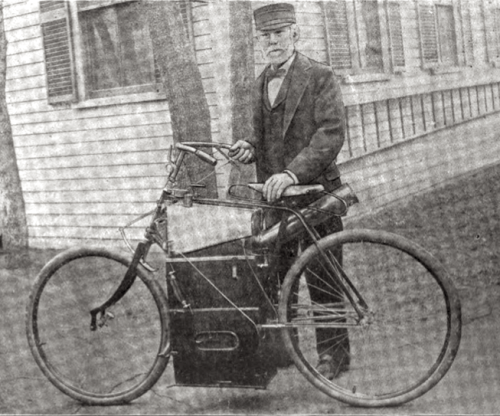Sylvester H. Roper (Sylvester H. Roper)

Sylvester H. Roper’s father, Merrick, was a cabinetmaker, born 1792 in Sterling, Massachusetts. Merrick came to Francestown, New Hampshire in 1807 and married Sylvester’s mother Susan Fairbanks in 1817. Sylvester had an older brother who was a housepainter, two younger sisters, and a younger brother who became a machinist at the Singer Sewing Machine Manufactory in Boston, then later a jeweler. Sylvester Roper was born on 24 November 1823. From an early age he displayed mechanical talent. At age 12 he made a stationary steam engine, even though he had never seen one before in person; this invention was kept on display in the laboratory of the Francestown Academy. At age 14, he built a locomotive engine, and only afterward saw such an engine for the first time in Nashua. Roper left Francestown at a young age and worked as a machinist, first in Nashua, then in Manchester, New York, and Worcester. He married Almira D. Hill on 20 April 1845 in Providence, Rhode Island. In 1854 he moved to Boston.
About the same time he came to Boston, Roper invented his Handstitch Sewing Machine. In 1861 he invented a hot air engine. Roper worked for the Springfield Armory during the Civil War. Roper’s work eventually came to the attention of other inventors and engineers of the area, including Elias Howe, Alvan Clark, Christopher Miner Spencer. Roper was observed driving his steam carriage around Boston in 1863. One such 1863 carriage went to the Henry Ford Museum. Roper invented the first shotgun choke, short tubes that could be threaded onto, or removed from, the outside of the shotgun barrel to vary the shot spread to suit different targets and ranges. Roper and Christopher Miner Spencer were granted a joint patent for a repeating shotgun mechanism on 4 April 1882. Later, on 21 April 1885, Roper alone obtained a patent for an improved shotgun loading mechanism. Roper and his son, Charles, designed a factory producing screw making equipment, which Charles Roper continued to manage after his father’s death.
On 1 June 1896, Roper rode one of his later velocipede models, a Pope Manufacturing Company Columbia bicycle with a steam engine added, to the Charles River bicycle track, near Harvard Bridge, Cambridge, Massachusetts where he made several laps, pacing bicyclists there, including professional rider Tom Butler who could not keep up with the steam powered machine. Roper was clocked at 2 minutes 1.4 seconds for the flying mile, for a top speed 40 mph (64 km/h) He was seen to wobble and then fall on the track, suffering a head wound, and was found dead. After autopsy, the cause of death was found to be heart failure, although it is unknown if the crash was the cause of the stress on his heart, or if his heart gave out first which led to the crash.
Born
- November, 24, 1823
- USA
- Francestown, New Hampshire
Died
- June, 01, 1896
- USA
- Harvard Bridge, Cambridge, Massachusetts
Cause of Death
- heart failure, motorcycle crash

